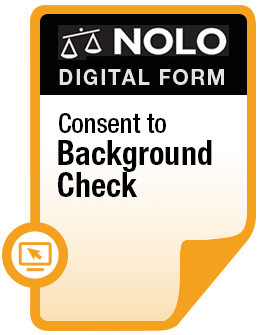Give meaningful feedback on employee performance -- without creating legal problems.
Employers who routinely monitor employee performance and conduct regular performance reviews reap tremendous benefits. Among them:
- Your employees will know what you expect of them. They will receive feedback, praise, and criticism of their work, and they will be on notice of any shortfalls in their performance or conduct.
- You can recognize and reward good employees and identify and coach workers who are having trouble.
- The communication required to make the evaluation process effective ensures that you will stay in tune with the needs and concerns of your workforce.
The evaluation process also nips a lot of employment problems in the bud. Performance evaluations can keep you out of legal trouble by helping you track and document your employees' problems.
If you ever need to fire or discipline a worker, you will have written proof that you gave the employee notice of a performance or conduct problem and an opportunity to correct it. This will be invaluable later on if a fired employee argues that he or she was fired for illegal reasons, such as discrimination.
This article provides an overview of the evaluation process; for step-by-step instructions and forms for conducting performance evaluations, see Dealing With Problem Employees, by Amy DelPo & Lisa Guerin (Nolo).
What Is an Employee Performance Review?
An employee performance review is a structured evaluation process conducted by employers to assess an employee's job performance and accomplishments. It typically involves discussing the employee's strengths, areas for improvement, and goal-setting for the future. The review aims to provide feedback, promote growth, and align the employee's efforts with the organization's objectives.
Create Standards and Goals
Before you can accurately evaluate employee performance, you need to establish a system to measure that performance. For each employee, you need to come up with performance standards and goals.
Performance standards. Performance standards describe what you want workers in a particular job to accomplish and how you want the job done. These standards apply across the board, to every employee who holds the same position. For example, a performance standard for a salesperson might be to make $50,000 in sales per quarter. Make sure your standards are achievable and directly related to the employee's job.
Goals. Unlike performance standards, goals should be tailored to each employee; they will depend on the individual worker's strengths and weaknesses. For example, a goal for a graphic artist might be learning a new software program that will make his or her work more efficient; for an accounting professional, a goal might be to take the exam to become a certified public accountant. Your workers can help you figure out what goals are reasonable and appropriate.
Once you have defined the standards and goals for each position and worker, write them down and hand them out to your employees. This will let your employees know what you expect and what they will have to achieve during the year to receive a positive evaluation.
Keep Track of Employee Performance
Throughout the year, track the performance of each employee. Keep a log for each worker, either on your computer or on paper. Note memorable incidents or projects involving that worker, whether good or bad. For example, you might note that a worker was absent without calling in, worked overtime to complete an important project, or participated in a community outreach program on behalf of the company.
If an employee does an especially wonderful job on a project or really fouls something up, consider giving immediate feedback. Let the employee know that you noticed and appreciate the extra effort—or that you are concerned about the employee's performance. If you choose to give this kind of feedback orally, make a written note of the conversation for the employee's personnel file. It is also a good idea to have a policy on employee discipline in your company's employee handbook; for some guidance, see our article on progressive discipline policies.
Giving the Evaluation
At least once a year, formally evaluate each employee by writing a performance review and holding a meeting with the employee. To prepare, gather and review all of the documents and records relating to the employee's performance, productivity, and behavior. Review your log and the employee's personnel file. You might also want to take a look at other company records relating to the worker, including sales records, call reports, productivity records, time cards, or budget reports.
Once you have reviewed these documents and gathered your thoughts about the employee's work, write the performance review. Although a performance review can take many forms, it should include:
- each standard or goal you set for that worker and that job
- your conclusion as to whether the employee met the standard or goal, and
- the reasons that support your conclusion.
If you will solicit input from other managers, ask each of them to complete an evaluation, and then compile them. You might also want the employee to conduct a self-evaluation in advance of the meeting.
When you have finished writing the evaluation, set up a meeting to discuss it with the employee. Remember, this is likely to be one of the most important meetings you have with each employee all year, so schedule enough time to discuss each issue thoroughly.
At the meeting, let your worker know what you think he or she did well and which areas could use some improvement. Using your evaluation as a guide, explain your conclusions about each standard and goal. Listen carefully to your worker's comments and ask the worker to write them down on the evaluation form. Take notes on the meeting and include those notes on the form.
Tips for Giving Effective Performance Evaluations
Giving evaluations can be difficult. Some workers react to criticism defensively. And, sometimes, no one understands what merits a positive evaluation. If your workers feel that you take it easy on some of them while coming down hard on others, resentment is inevitable. Avoid these problems by following these rules:
Be Specific
When you set goals and standards for your workers, spell out exactly what they will have to do to achieve them. For example, don't say "work harder" or "improve quality." Instead, say "increase sales by 20% over last year" or "make no more than three errors per day in data input." Similarly, when you evaluate a worker, give specific examples of what the employee did to achieve—or fall short of—the goal.
Give Deadlines
If you want to see improvement, give the worker a timeline to turn things around. If you expect something to be done by a certain date, say so.
Be Realistic
If you set unrealistic or impossible goals and standards, employees will have little incentive to do their best if they know they will still fall short. Don't make your standards too easy to achieve, but do take into account the realities of your workplace.
Be Honest
A common error in conducting performance review is overemphasizing the positive in order to avoid conflict or keep employees happy (a phenomenon called "leniency error"). But this can lead to major problems for your company.
If everyone gets the same positive performance review no matter what they do, employees will have little incentive to do their best. Also, if you end up firing an employee for poor performance, but the employee later claims he or she was fired for illegal reasons, you won't have any documentation to back you up.
Be Complete
Write your evaluation so that an outsider reading it would be able to understand exactly what happened and why. Remember, that evaluation just might become evidence in a lawsuit. If it does, you will want the judge and jury to see why you rated the employee as you did.
Evaluate Performance, Not Personality
Focus on how well (or poorly) the worker does the job—not on the worker's personal characteristics or traits. For instance, don't say the employee is "angry and emotional." Instead, focus on the workplace conduct that is the problem—for example, you can say the employee "has been insubordinate to managers twice in the past six months. This behavior is unacceptable and must stop."
Listed to Your Employees
The evaluation process will seem fairer to your workers if they have an opportunity to express their concerns, too. Ask employees what they enjoy about their jobs and about working at the company. Also ask about any concerns or problems they might have. You'll gain valuable information, and your employees will feel like real participants in the process. In some cases, you might even learn something that could change your evaluation.



